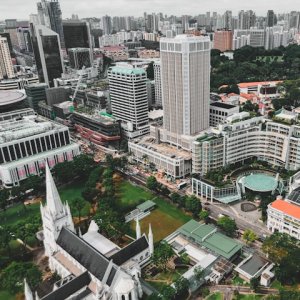
Multifunctional Infrastructure: The Keystone Of Architecture Trends
As space becomes limited in large cities such as Mexico City, Monterrey and Guadalajara, architects and urbanists are increasingly looking for new ways to optimize square meters. As developers look to verticalization and mixed-use developments, architects are discovering new uses for ordinary urban infrastructure such as dams and ring roads. “Multifunctional infrastructure could provide solutions to more than one particular problem,” says Architect and Urbanist Iñaki Echeverria. “The country should no longer be able to design projects that serve one sole purpose.” But while it seems only logical to improve the usefulness of a given piece of infrastructure, the concept of multifunctionality is still at an early stage in Mexico.
Architecture for multifunctional infrastructure aims to gather different functions in one space. Jacinto Arenas, CEO of Ares Arquitectos, says that functionality should be considered on a number of levels when developing a project. First, with a social component at its core. “Projects should aim to improve the lives of the people who will live and work there,” he says.
To achieve this, architecture should be both aesthetic and functional and should be analyzed in the context of the client and its particular surroundings. A deep understanding of customer feedback becomes crucial for project planning, says Echeverría. “Developers must promote the purpose infrastructure will serve and who it is aimed at to truly maximize its potential and take full advantage of the opportunity,” he explains.
A MEXICAN UTOPIA?
While architecture may open the door for multifunctional infrastructure, Echeverría warns that this opportunity can be missed, as was the case of Mexico City’s Periférico ring road’s second floor. The project involved a high cost and takes up a great deal of area in the city but when developing, it was only considered to meet a transportation need when it could have been much more. “It is a missed opportunity to repurpose it into something that could provide benefit for the rest of the population,” he says. “It could include a route to carry optical fiber or serve as a solar energy generator.” He adds that, if properly considered, the structure of the road could work as a water distribution network and treatment plant, at the same time solving the problem of its flooding.
In this context, projects should be viewed as more than solving one problem and also incorporate elements that indirectly improve life quality. But is this a utopian dream? “For example, we designed a sports center in Atlacomulco in the State of Mexico but its beautiful lakes double as a water-treatment plant for the community,” he says. Unfortunately, this project was canceled due to high costs and a lack of budget.
GREEN IS MULTIFUNCTIONAL
The Periferico and Atlacomulco projects may be slightly too complex for Mexico to adopt yet, but Echeverría says the country can start simply, through repurposing of its green and public spaces. The urbanist believes these are the ultimate form of multifunctional urban infrastructure. Take public parks, for example. Not only can they be a communitarian space for leisure, they can also serve as a green lung for cities while having artificial lakes that can be used as water treatment plants.
And even if Periférico’s second floor can be seen as a failure in some ways, it was a success in others. While it did not become a huge elevated water treatment plant, it succeeded as a green lung for the city. The Vía Verde project was launched in 2016 following a public petition on the digital platform Change.org, with the idea to turn over 1,000 concrete pillars into more than 60,000m2 of vertical gardens. Directed by architect Fernando Ortíz, this project achieved multifunctionality for Periférico. To address the financing hurdle, Vía Verde is entirely funded through private sponsorship, with sponsors getting advertisement opportunities in one out of every 10 pillars endorsed.
Just as with Periférico, Mexican cities are looking for new uses for public infrastructure. Projects such as the Tlalpan Viaduct in Mexico City, the Tec District in Monterrey, or the regeneration of the second section of the Interceptor Canal in Aguascalientes are some examples. “The market demands straightforward solutions that innovate in infrastructure development,” says Echeverria. “The discussion for social and sustainable infrastructure is becoming increasingly important.”
















